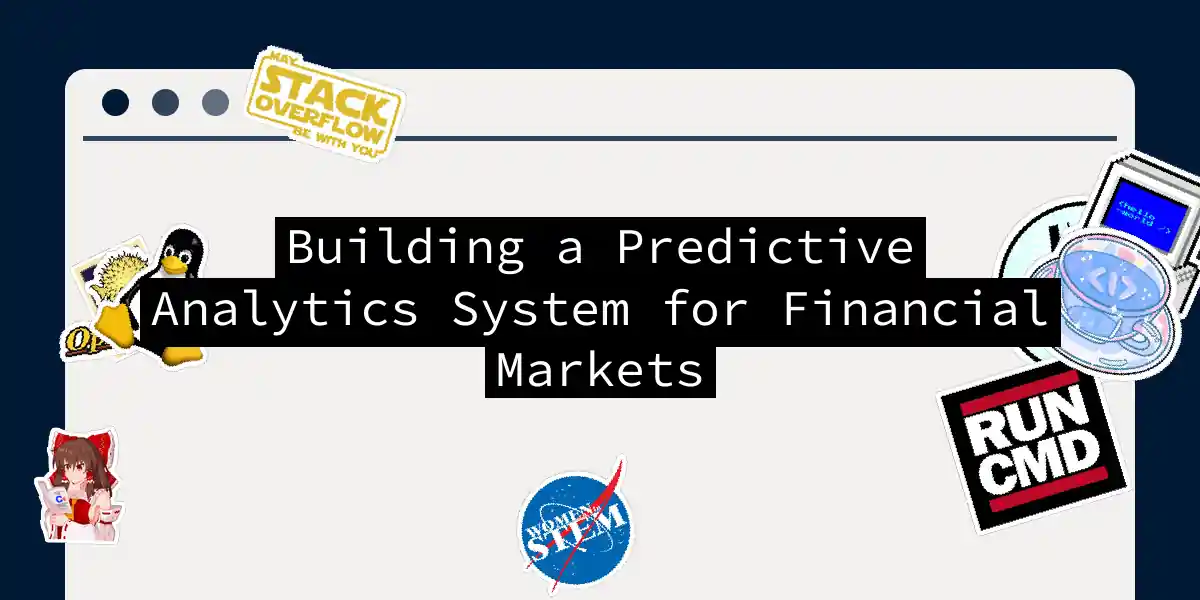Introduction to Predictive Analytics in Finance
In the high-stakes world of financial markets, predicting the future is akin to having a crystal ball. While we can’t quite conjure up Nostradamus, predictive analytics comes close. This powerful tool leverages machine learning, artificial intelligence, and statistical methods to forecast future outcomes, helping financial institutions make informed decisions and stay ahead of the curve.
What is Predictive Analytics in Finance?
Predictive analytics in finance involves analyzing large datasets to predict future events. It goes beyond historical analysis and forecasting by identifying hidden patterns, connections, and dependencies within vast amounts of data. This approach is crucial for optimizing operations, managing risks, and driving sustainable growth in the finance sector.
Key Components of Predictive Analytics
Data Sources
Predictive analytics in finance relies on several types of data:
- Historical Market Data: This includes stock prices, trading volumes, and financial statements. Analyzing historical trends is foundational for forecasting future financial performances.
- Economic Indicators: These are macroeconomic data points such as GDP, CPI, and unemployment statistics. They help predict the economic well-being of a company and the broader market.
- Sentiment Analysis: This involves reading and interpreting social sentiment around brands, services, or products. It monitors online dialogue on social media channels, third-party platforms, and online reviews to uncover valuable insights.
Predictive Models
There are several predictive models commonly used in finance:
Classification Models
These models categorize customers or prospects into segments or groups based on historical data. They are useful for fraud detection, risk analysis, and credit risk evaluation.
- Regression Analysis: Identifies the relationship between entities and defines patterns in massive datasets.
- Decision Trees: Categorize data into different variables based on other parameters. Useful when several variables are missing from a dataset.
- Neural Networks: Model complex non-linear relationships in datasets. They can validate the results of decision trees and regression analysis.
Clustering Models
These models group entities by identifying differences and similarities between them. For example, a banking business can segment customers into groups based on similar features and personalize product and service strategies accordingly.
Time Series Models
These models use data inputs at a particular frequency (e.g., daily, weekly, or monthly) to understand patterns, trends, and cyclical behavior. They plot variables against time to forecast future values.
Use Cases in Financial Markets
Predictive analytics has numerous applications in financial markets:
Cash Flow Forecasting
Predictive analytics helps finance teams gain better visibility into their cash inflows and outflows by analyzing invoice data, past payment trends, cash position, and other factors. This enables better planning of investments and optimization of cash flow.
Risk Management
Predictive analytics aids in identifying and managing risks associated with different investment strategies. By simulating scenarios and analyzing data, finance professionals can adjust strategies to mitigate potential risks.
Fraud Detection
Predictive analytics algorithms can detect and prevent fraudulent activities such as credit card fraud and identity theft. By analyzing historical transaction data and identifying patterns of suspicious behavior, these algorithms help flag potentially fraudulent transactions.
Investment Decisions
Predictive analytics assists investment managers in making informed decisions by analyzing market trends and identifying potential opportunities and risks. This includes stock market forecasting, where predictive analytics can estimate cash flows and predict future price movements.
Implementing Predictive Analytics
Step-by-Step Guide
Define Objectives: Outline why you need predictive analytics. This could be reducing operating expenses, enhancing customer experience, or mitigating potential credit risk. Setting clear goals helps in choosing the right tools.
Identify Relevant Data Sources: Use trustworthy and relevant internal and external data sources. This may include transactional records, customer and market data, economic indicators, etc..
Validate and Test Models: Validate and test predictive models for accuracy and reliability before deploying them. Techniques like cross-validation and backtesting reduce the possibility of generating incorrect forecasts.
Ensure Regulatory Compliance: Adhere to privacy regulations, data protection laws, and industry standards. Safeguarding sensitive data and establishing compliance ensures customer privacy and upholds the organization’s reputation.
Example Workflow
Here’s a simplified workflow for implementing predictive analytics in finance using Mermaid syntax:
Code Example: Simple Regression Analysis
Here’s a simple example using Python and the scikit-learn library to perform regression analysis:
import pandas as pd
from sklearn.model_selection import train_test_split
from sklearn.linear_model import LinearRegression
from sklearn.metrics import mean_squared_error
# Load historical market data
data = pd.read_csv('market_data.csv')
# Split data into features and target
X = data[['Feature1', 'Feature2']]
y = data['Target']
# Split data into training and testing sets
X_train, X_test, y_train, y_test = train_test_split(X, y, test_size=0.2, random_state=42)
# Train the model
model = LinearRegression()
model.fit(X_train, y_train)
# Make predictions
y_pred = model.predict(X_test)
# Evaluate the model
mse = mean_squared_error(y_test, y_pred)
print(f'Mean Squared Error: {mse}')
Conclusion
Predictive analytics is a game-changer for financial markets, offering a proactive approach to managing risks, optimizing investments, and enhancing decision-making. By leveraging historical data, economic indicators, and advanced analytical techniques, financial institutions can gain a competitive edge and navigate the complex landscape of financial markets with greater confidence.
Remember, predictive analytics is not just about forecasting the future; it’s about making informed decisions today that will shape your financial future tomorrow. So, dive in, get your hands dirty with data, and watch your financial predictions become more accurate than a fortune teller’s crystal ball
